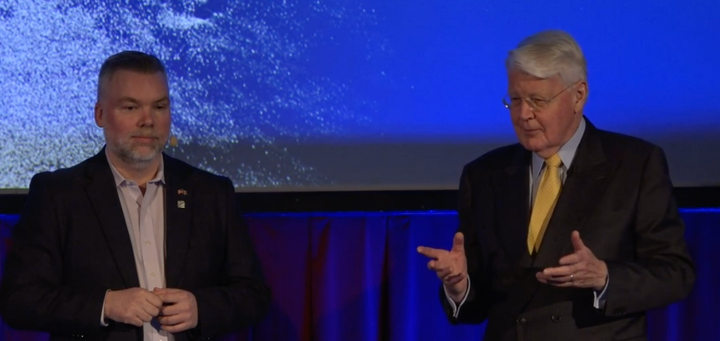Who finances startups in Iceland? A look at LP's
This post is from the Northstack Memo, our newsletter and commentary on recent happenings in the Icelandic startup ecosystem, written by @kiddiarni.
While some investors – most notably angel investors – invest their own money in startups, venture capital funds mostly get their money from other investors. VC funds are set up in partnerships, and it’s the LP’s – limited partners – that bring the money. So just like founders and CEO’s pitch VC’s for funding, VC’s pitch asset managers at LP’s for their money.
For most LP’s, investing in venture funds is a part of their diversification strategy, and seen as a low-risk way for outsized returns. Low risk, because the absolute amounts are small compared to their assets under management (AUM), outsized returns, because the best VC returns can be mindboggling (Seqouia Capital and their 10x return on a $400m fund is a good example).
Scott Kupor, managing partner at VC fund Andreessen-Horowitz wrote a post on VC economics, and I highly recommend it. For the purpose of this post, I’m highlighting one part, where he discusses the types of institutions that usually function as LP’s:
University endowments – Yale is a famous example
Foundations – Non profits that invest their funds to fund their charity
Pension funds – That receive money from workers and invest them
Family offices – Investment managers that work for very high net worth families
Sovereign Wealth Funds – Investing the economic reserves of a country, like the Norwegian Oil fund
Insurance Companies – Invest their customer’s premiums, to be able to pay out when something happens (and also to make money)
Fund-of-funds – Investment companies that have their own LP’s and allocate money on their behalf
Who invests in Icelandic VC?
In Iceland, we currently have four VC funds (and one on its way) – Brunnur Ventures, Frumtak 1, Frumtak 2, and Eyrir Sprotar. Looking at the LP’s in those has some interesting points:
Pension funds are by far the biggest player
Both in terms of participants (we tracked 12 pension funds that are investors in Icelandic VC funds) and proportion of capital. Around 62% of the roughly 17bn ISK that have been invested (or promised) in Icelandic venture capital since 2008 come from pension funds. While in comparison to the VC market, this is a very big portion of the market, it’s important to keep in mind the vast amount of money available to these institutions. LÍVE (Iceland’s biggest pension fund) alone has 600bn ISK under management, and even if LÍVE was the sole backer of Icelandic VC, this allocation would be way below the 5% mark many pension funds in the US allocate to VC. (It should be noted that LÍVE could of course be an investor in foreign VC funds directly or through fund-of-funds).
Of the pension funds, LÍVE is the most active
This is not surprising, because the fund is the biggest in Iceland. It participated in all four of the funds, and in three of them utilized most of its 20% allowance (Pension funds are only allowed to own 20% of a company structured like a VC fund – more here). In total, the fund has a little under 3bn invested in VC funds, around 0.5% of its AUM.
The next biggest LP players are banks
Which is interesting, as banks aren’t mentioned as LP’s in Scott Kupor’s discussion of LP’s. In any case, all three banks have participated in at least one venture fund. Landsbankinn has participated in three, Arion banki in two and Íslandsbanki in one. In total the banks contribute around 3.2bn ISK, just under 19% of the total money.
There’s a lot of LP groups missing
There are no insurance companies, university endowments, charitable foundations, or sovereign wealth funds listed as participants in the Icelandic VC’s. There’s a couple that could count as family offices – holding companies of high-networth individuals are (small) participants in some – so we’ll call them that.
What does it all mean?
These numbers and observations suggest several things.
Icelandic VC’s rely a lot on pension funds, and other types of funds haven’t participated in VC (yet). This could very well be due to the fact that we don’t have a long history of returns in the VC industry, like the US one has. We’re looking at four funds over 9 years, while the US industry has decades to build on.
There might be fundraising opportunities for Icelandic VC’s in insurance companies. They are active in other types of investments and might be open to investing in VC. (If you’re a VC and have tried to raise from an insurance company, please let me know – just hit reply).
The structure of available capital in general is very different from the US. We don’t have university endowments or big charitable organisations that need to invest their money, or a long history of wealthy families that need investment managers for their family wealth. At the same time, the banks in Iceland step in and participate in these activities. This could mean that we need to find different types of backers for our VC funds.
I’d be very interested in knowing how this matches up to the Nordics and rest of Europe. It could be that this difference is mostly size-related. Iceland is so small that we don’t have massive bequeathals to charitable donations or a lot of family offices. It could also be cultural – I don’t think may European universities run investment offices for their massive endowments.
What are your thoughts? Do you work on the LP side? Can I buy you a coffee and discuss this topic (off-the-record, if you wish)? Send me a message and let me know.
Sign up to receive the Northstack Memo straight into your inbox.
[mc4wp_form]




